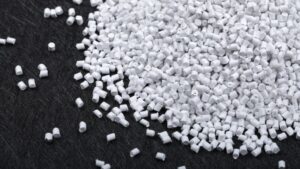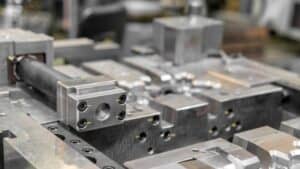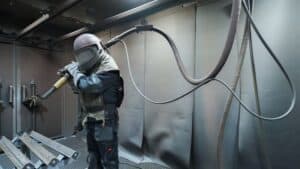We already know that injection molding is a highly complex process. It requires deep expertise and patience. Also, if you have experience, you can get the job done right all the time. One of the critical aspects of the entire plastic making process is the parting line injection molding.

Plastic tools and toys usually have internal components. That is why the external plastic parts are made with hollow cavities, which accommodate the inner components. Now, both parts of the plastic must come together to cover the internal components. The point at which the two pieces of plastic overlap is called a parting line.
Therefore, the parting line is the point at which two plastic parts meet to form a complete item. It is usually held in place by glue. However, if there is a need to repair the device, toy, or tool, you will need to separate the parting line to reach the components within.
Now you can see why parting line injection molding is so critical. There must be no space when both parting lines meet. Or else, the internal components can become compromised by dust, moisture, or other contaminants. And, if there is ever a need to take the parting lines apart because the job is perfectly done, you can hold the parts together again with a good glue after fixing it.
How to select the parting line?
There are some basic steps to select a parting line. Since there is no room for error, you need to do this carefully. In the following paragraphs, you will read about our best tips to choose a perfect parting line.
First, you should identify the best parting angle or inclination on the proposed plastic product. This can be done by studying the prototype or design sketches for the plastic product you are about to make. This should not be a difficult task for experienced production engineers.
Also, you should identify the point at which the two plastic parts will meet. When you can define this area, you already have your parting line. Ideally, it should divide your final plastic product into two halves.
In addition, you must find out if the plastic product has a draft angle. If it does, these features should be considered while you create its parting line. Above all, you should do several tests to ensure that you have identified the right parting line. You can ask for peer advice from other product engineers because getting it wrong will lead to huge losses during the production process.
Why is the parting line so important?
There are so many reasons why you must get the accurate parting line. It is one of the features that determine the outcome of your plastic product manufacturing process. One mistake in this area can distort the entire project. For one, the parting line influences the quality of the plastic product you are trying to make. And maybe you won’t be able to use or sell the product to a consumer.
Also, identifying the parting line can make it much easier for you to complete the entire injection molding process without stress. When you hear about product engineers having issues with their injection molding machines or related operations, they probably did not get the right parting line for the product.
Another reason why the parting line has become essential to plastic production is the ejection process. Considering that the mold is divided into two halves, you need to ensure that the plastic can be released from the cavity and core without distorting the parting line. Well, for this part, you have the ejection pins to help you do it right.
Different types of parting lines
Here are some of the standard parting lines you can find on plastic products. You should know these different parting lines. You can make quicker decisions in the factory to complete your injection molding process when you see the parting line on the product.
The vertical parting line
This is one of the most common forms of parting lines found on plastic products. It runs vertically from one end of the product to the other. You can easily work with this parting line because ejecting the product from the core or cavity is effortless.
Stepped parting line
This parting line style is attributed to external pressure on the cavity. Consequently, the core can slide a little bit over the cavity. If this is not monitored and managed, it can ruin the plastic product.
However, if it is minimal, you will get a stepped parting line, which is not too bad. To manage the situation, experts advise that you should find a way to support the cavity to prevent the core from sliding over it.
Also, the appropriate gates should be used for the manufacturing process. This will ensure that the volume of molten plastic poured into the mold does not exceed the recommended volume. Excess volume in the mold can cause the shift and ruin the stepped parting line.
Curved parting line
You can find this parting line on children’s toys and other plastic equipment with many rounded sides. It is another standard parting line in the industry. You can make it fairly easily too.
The comprehensive parting line
This is one of the complicated parting lines you will find in the injection molding industry. The feature of this parting line is a combination of other parting lines, causing a complex joining in between the plastic halves. While it is scarce, there may be situations where the comprehensive parting line works best for the injection molding process.
However, the comprehensive parting line can complicate the product, especially when you often need to take it apart during repairs. Above all, please consider making your parting lines perfect. They are the determinants that influence the appealing physical appearance of your plastic product. Also, you won’t have any worries about structural defects when you get the parting line right.






